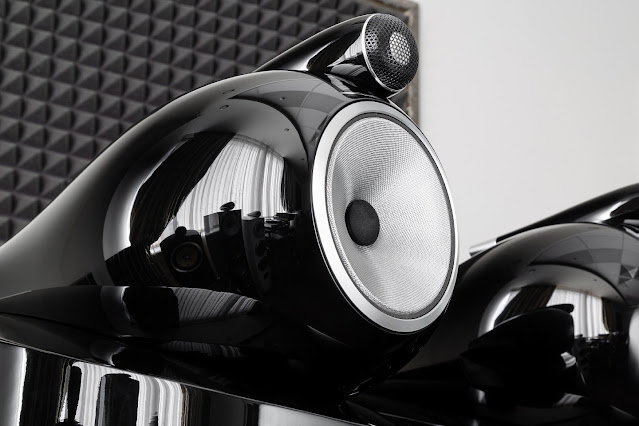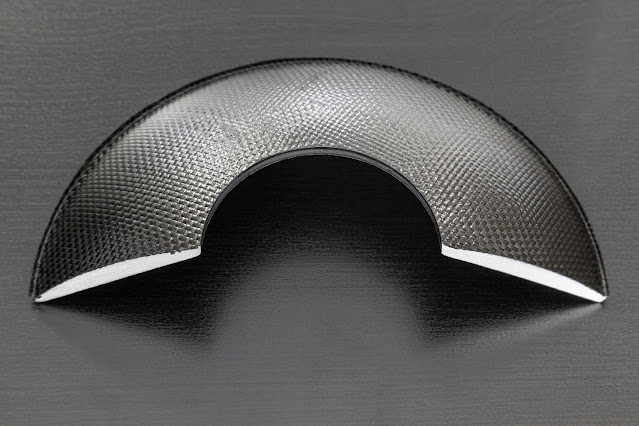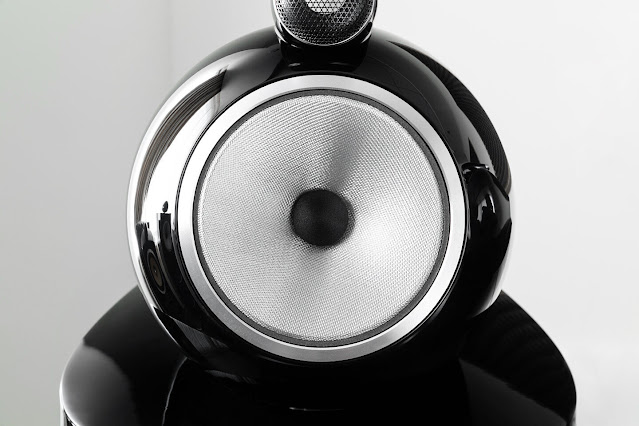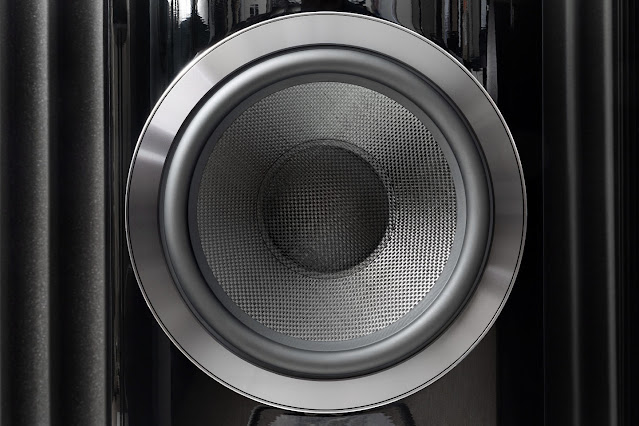Bowers & Wilkins 800 D3 Floorstanding Speaker Test
The acoustics of the English company Bowers & Wilkins always attracts the close attention of the audiophile audience - the company has been successfully making speakers for many decades, and many of its models have become hits on the market. The subject of our testing this time is the oldest acoustics in the manufacturer's catalog. Let's see what kind of sound the company now offers as its standard.
Independence and originality
The eight-hundredth series has been around for a long time and has survived the release of several successive lines. In some cases, the changes were moderately noticeable, in others they were significant. In the latest D3 line, almost everything has been redone. From the previous version, neither the cabinet nor the speakers remained - with the exception of the diamond dome tweeter.
Only some construction techniques and a completely recognizable design have been preserved, however, as before, dictated not by the whim of the designer, but by technical approaches. The project of a new senior line was developed and implemented for about eight years.
Bowers & Wilkins is one of the largest loudspeaker manufacturers and has a rich history. As a matter of fact, the older acoustics 800 D3, released three years ago, became a kind of anniversary model for the 50th anniversary of the company. In terms of development, you need to understand that such a large company can afford a serious development staff and decent investments in research and experiments.
For this part, Bowers & Wilkins is doing very well: they do not spare funds for development, there are resources, and accordingly, it is possible to independently develop acoustics and release it using their own components, and not purchased from third-party manufacturers. This in itself does not speak of the resulting sound, but it certainly speaks of technical independence and originality.
 |
| Midrange and tweeter housed in separate aluminum enclosures |
The first thing that attracts attention in the design of this speaker is that it is very complex. It makes no sense to disassemble the column on your own: the manufacturer does not make a secret out of the insides, and finding information, photos and videos is not a problem. This is understandable: it will be extremely problematic to repeat this and very serious investments will be required, and Bowers & Wilkins is clearly not afraid of partial borrowing.
 |
| In the new line, the diamond tweeter has a different, non-removable (without a special tool) protective cap |
The base of the speakers is cast, aluminum, with a matte black finish, regardless of the color of the case. The complex drop-like shape here corresponds to the whole shape of the acoustics, more precisely, to the shape of its low-frequency section. Two important structural elements of the base should be noted.
First, it's supports. The acoustics rolls out of the box on roller wheels, but it is not supposed to stand on them. It is possible, but not necessary. Wheels are needed only for convenient and accurate positioning in the room. Then, using the tools from the kit, you need to unscrew the regular adjustable spikes from the base, move the regular spacers under them and “raise” the acoustics on the spikes. As a result, the wheels will be visible only if you lie on the floor.
 |
| Low-frequency section of acoustics - two speakers of 10 inches |
The second important feature of the base is that the bass-reflex port is brought to it from top to bottom. For Bowers & Wilkins, this is already a familiar solution, and in general - it has been gaining popularity for some time now. From the user's point of view, this simplifies the placement of acoustics for us and eliminates potential problems - as in the case if the phase inverter is placed on the back wall.
The user manual says that the distance from the back and side walls for this model is desirable at least 50 cm, which, given the size of the acoustics and a potentially reasonable room for its size, looks pretty decent, and there shouldn't be any big problems with the placement.
The body of the low-frequency section is made of plywood and has a complex structure. The inner frame is glued from plywood parts, the outer teardrop-shaped shell is glued from several layers of saw cuts and bent directly during production. That is, the entire front and sides of the bass cabinet is one single glued-bent and after-processed part.
The rear panel of a relatively small area is completely covered with a corrugated aluminum plate. By the way, the filter boards, previously located at the base, “moved” to the inside of this plate. The "tubes" into which low-frequency speakers are inserted on the front panel, as well as part of the internal reinforcing structure of the mount, are made of aluminum.
The bass speakers themselves are large - each speaker uses a pair of 10-inch woofers. The speakers are their own, not custom-made. In the description and characteristics, the manufacturer points to a new material developed for this line, called Aerofoil. If you look at the diffuser in section, you can see that this is some kind of light polymer foam, reinforced on both sides with a thin woven material, most likely a type of carbon fiber. The construction is light and rigid. True, rubber-like diffuser suspensions are not very soft to the touch.
The 6-inch mid-range driver is traditionally placed in a separate volume for this line of acoustics - the so-called "Turbine Head" machined from aluminum and varnished. Inside, the chamber is rounded and completely symmetrical - all fasteners for assembling the case do not affect the internal volume in any way, and the midrange itself is fixed with a long rod extending from the center of the magnet to the rear surface of the inner chamber. That is, there are no screw fasteners at all along the edges of the speaker - only a round edge and a rubber seal.
 |
| Aerofoil, from which the woofers are made in the new 800 series |
In addition, a diffuser and suspension can be mentioned from the unusual design. The cone material is a patented Continuum, some kind of woven and glued material with unusual behavior. The diffuser is thin, actually translucent. The material is light and soft to the touch, and if we consider a separate speaker, the diffuser flexes easily and does not lose its shape at all.
But only in the piston mode of motion does the diffuser turn out to be unexpectedly rigid, albeit easily movable. Probably, the structure and orientation of the fibers gives this effect. It is difficult to see the suspension of the speaker - it is covered with a circular foam insert. It is not even clear whether there is a suspension there, or whether the entire structure is made of only one material. The central cap covering the opening in the diffuser is made of soft foam material.
The tweeter is also traditionally placed in a separate volume - an elongated aluminum tweeter case is attached to the "Turbine head" from above. The body mount is not rigid, on the contrary, additional damping is applied here. The diamond dome of the tweeter is practically the only thing that the acoustics inherited from the previous model. But there are changes here too. For example, the protective mesh of the tweeter has become stronger, and now it cannot be removed without a special tool, which, given previous experience and the fragility of the diamond dome, has become a very logical decision.
 |
| The mid-range in the 800 series has been significantly redesigned compared to the previous line |
Bass and midrange grills are separate, with magnetic fastening. Switching acoustics allows (and even rather assumes) two pairs of cables, and bi-amping is quite possible and probable here, because the exactingness of older Bowers & Wilkins models to the power and current output of amplifiers is already known to everyone.
Strict and big sound
Acoustics for the test went not just out of the box - she managed to work long enough to fully come to her senses. Esoteric Digital Source Test System with PS Audio Amplification BHK Signature Preamplifier and BHK Signature 300 Monos is a good listening option. The gain margin is definitely enough here, and the source, to my ears and tastes, is quite suitable in order to obtain the desired resolution.
In general, I take into account the "rock" reputation of acoustics of this manufacturer, but once again listening to how Pink Floyd or AC / DC sound on them does not seem to me a good idea. It is much more interesting to test acoustics on different material to find out what it can offer different listeners.
The first was the disc The Bill Crow Quartet "Jazz Anecdotes". The recording style of Venus Records is clearly audible and recognizable, but at the same time the sound is rather monitor-like, clear and fast, without softening, warmth and some bloat, which is periodically characteristic of the discs of this label. I repeat, the character is audible, but there is just enough of it that it does not interfere and does not attract too much attention to itself. Personally, I like listening to music this way - you can focus on it, and not on the sound signature.
The sound turned out quite strict and slender. In addition, large in scale and with good bass control. However, I did not notice some impudently impudent delivery in all this. Some aesthetics and grace in the character has become more, but not to the detriment of harmony. But after all, there is no need to explain the difference between confidence and impudence in the presentation - it is quite obvious how one differs from the other.
 |
| Aluminum tweeter housing |
There are also other specifics. For example, you can listen at a very low volume, but the acoustics do not want to whisper with aspiration and revel in the overtones - as if this is contrary to its nature. And the priorities here are set quite clearly. In terms of dynamics, in general, everything is very good - at least on this recording (and this is not the most difficult material in this context), there were no problems.
The approach to detail, again, can be called somewhat monitor: up to a certain limit, everything is heard and read well, but listening to the air of the studios is not on this system. Here, the priority is the main sounds, instruments and playing technique - all this is heard well and in detail. And any pretentiousness, coloring is not felt. The sound is definitely not warm, closer to cool. But the cold pricklyness is also not noticeable. Rather, everything is restrained and balanced, without unnecessary features.
In terms of frequencies, you can hear that the system plays both deep in bass and has no flaws in the tops. Personally, for my taste, the stitching of the characters of the tweeter and midrange (and the bass section with everything else) is much better here than in the previous generation. And the bass does not feel bloated, although there is a lot of it. The speed on the whole range is very good.
Restraint, not audiophile goosebumps
The next album is Coralie Clement "Sallie Des Pas Perdus". One can also expect an expressive delivery with accented vocals from this disc. But in reality, again, with audible features, everything turned out to be smoother and more neutral than expected. The volume of the stage is there, the vocals are in place, without exaggeration. The nature of the sound is dynamic and restrained in terms of emotions, although the acoustics do not repaint or change anything.
 |
| Diamond dome tweeter (demo) |
On the stage - really, everything turned out on a large scale. Although it is predictable, it is understandable that such speakers should not work in a small room with a dense arrangement. Here it only remains to emphasize that the sound is both big and powerful at the same time, which, oddly enough, does not contradict the refined (sometimes too much) emotional sweetness of the recording. On the contrary, everything is well balanced.
The sound with its monitority does not dictate it unambiguously - rather, everything somehow agrees with everything and gets along. But at the same time, the emphasis here is still on honesty and restraint, and not on “audiophile goosebumps”. The second plans are drawn normally, but the priority is for the first plans, for the main tones and for the rhythm. Emotions are created by the music itself and by the dynamics and even tonal balance that support it. Well, for bass lovers - it is here in a very decent amount, but with proper control.
 |
| Saw cut bass section body (demo sample) |
Then I listened to a collection of old mono recordings by Charlie Parker featuring Miles Davis "The Best of the Dial Years". I often take such discs for tests in order to understand how the technique copes with such musical material with all its imperfections. Will the sound be completely lost against the background of other recordings? Didn't show up. Of course, mono, cut spectrum and artifacts. But the scale and volume of the sound at the output are great to correct the situation, and in general, everything is listened to in an interesting and full way. And the volume and “size” of the sound are generally very good. However, the acoustics are not at all small, they are supposed to create volume.
The Beatles' "Revolver" album was also a good listener. The edition is old, the sound of this disc is clearly quiet - at least in comparison with later reissues. On the part of the systems, this option sounds somehow flat and generally so-so. But here there is more than enough energy, rhythm, fullness and volume are present, and adjusted for the overall scale drawn by acoustics, everything is very, very good.
Another album is DJ Krush "Zen". Here you can very well feel both the bass and the dynamics. The sound is very fast, but not fussy. There is pressure, there is a lot of it, but it does not feel like some kind of heavy mass. Well, mobility, drama - at an excellent level. We can already conclude that good dynamics over the entire range and attack are the strengths of this acoustics. And what I personally liked in comparison is that there is no vulgarity, rebasing or overloaded, tight lower middle. And they don’t shout the top: it plays sharply when it is recorded sharply. But I did not notice fatigue from the upper frequency range.
Power handwriting
Some heavy music - My Dying Bride "The Light at the End of the World". The system copes with porridge and dirty recording perfectly, intelligibility is significantly above average. Emotionally, everything is played quite honestly, straightforwardly and assertively. And even with good bass, which initially is not very much.
 |
| Bowers & Wilkins 800 D3 phase inverter is directed to the base |
In contrast, I listened to Ludmila Berlinskaya's "Reminiscenza" disc. Not bright, not catchy, but switching to piano music is easy. You can, if you wish, listen to the style of the recording, or you can listen to the music itself. In sound, everything is in its place, precise and strict.
Although in this case, the sound of the piano, for my taste, is already a little out of touch with the style and character of the acoustics. That is, everything is correct, honest, accurate, but not as deep in detail as we would like. On thin, almost weightless passages, the forceful handwriting is no longer heard as an unequivocal dignity. However, this recording itself is made quite conservatively and a little not as boldly as we would like. And it is precisely this property that is very noticeable and audible, although the old mono of Parker and Davis was pulled out more noticeably by the system and acoustics.
The performance of "Mysterien Sonaten" by Henrich Ignaz Franz Biber turned out to listen to both thoughtfully and with pleasure. The presentation also shows a confident strictness in the sound, where a somewhat more free interpretation could have been allowed, but everything turned out very proportionally and balanced. The feeling of air is moderate, you can usually hear more of it on this disc. Dynamics, again, excellent. And I will try to characterize the detail as a little “hidden”: there is an emphasis on the main tones, and the rest you need to listen to and get used to a little. Everything is there, just not so obvious and certainly not sticking out - with the arrangement of their own priorities for acoustics, everything is unambiguous and understandable.
Conclusion
Everything is very clear here - the quintessence and long-term evolution of Bowers & Wilkins' own understanding of the sound, brought to the limit. To be honest, I don't see how this acoustic can be changed or redone in the future. Either there is no need to touch anything at all, or it will already be something else. And the idea within the framework of itself is seen as completely whole and complete.
And this is still Bowers & Wilkins, which, just as before, will be categorically not liked by someone, but for someone will become their favorite acoustics and sound style for many years. So you can continue to argue and try on everything to your taste.
Musical Material
Cecilia Bartoli — Maria / Decca 475 9077 / Stereo
Charlie Parker featuring Miles Davis — The Best of the Dial Years / Nippon Crown CRCL-8848 / CD Mono
Coralie Clement — Sallie Des Pas Perdus / Nettwerk - Capitol 0 6700 30273 2 8 / CD Stereo
DJ Krush — - Zen / SMEJ – SRCL-4995 / CD Stereo
Henrich Ignaz Franz Biber — Mysteries Sonatas — Alice Pierot, Les Velleurs de Nut / Alpha 038 / CD Stereo
Ludmila Berlinskaya — Reminiscenza / Melody MEL CD 10 02526 / CD Stereo
My Dying Bride — The Light at the End of the World / Peaceville CDVILED 79 / CD Stereo
The Beatles — Revolver / EMI-Apple CP32-5327 / CD Stereo
The Bill Crow Quartet — Jazz Anecdotes / Venus Records VHCD-78160 / CD Stereo
Want to explore More?
Official Site: Bowers&Wilkins 800 D3
Bowers & Wilkins 800 D3 Specifications.
Number of bands: 3
Design of the low-frequency section: phase inverter directed to the base
Speakers:
1 x 25mm (1") diamond dome tweeter
1x 150mm (6") midrange driver with Continuum cone and FST surround
2 x 250 mm (10") bass drivers with Aerofoil cones
Frequency range: 13 Hz - 35 kHz
Bandwidth (±3 dB on the reference axis): 15 Hz - 28 kHz
Sensitivity (on-axis at 2.83 V, RMS): 90 dB
Harmonic distortion (2nd and 3rd harmonics, 90 dB, 1 m on axis):
<1% 80Hz - 20kHz
<<0.3% 100Hz - 20kHz
Impedance (nom/min): 8/3.0 ohm
Recommended amplifier power: 50-1000 watts into 8 ohms without clipping
Dimensions without supports (WxHxD): 413x1 217x611 mm
Weight: 94.5 kg
Body Finish: Gloss black (polished black), Satin white (matte white), Rosenut (pink walnut)
Grill finish: Black (black), Gray (gray)

















.jpg)



0 Comments